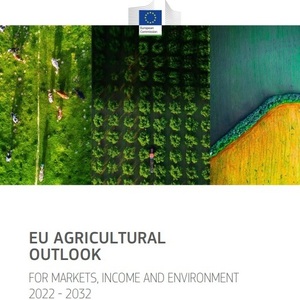EU ag outlook includes forecasts for biodiesel, ethanol demand

January 17, 2023
BY Erin Voegele
The European Commission has published its annual EU agricultural outlook, which includes projections for biofuel use through 2032. The outlook predicts stable biodiesel use in the medium-term, with increased ethanol use through 2030.
According to the report, expected EU demand for biofuels is directly linked to demand for road transport fuels and obligatory fuel blending rates. When compared to 2020-2022, diesel use is expected to fall by 21 percent by 2032. Gasoline use is expected to fall by 18 percent over the same period.
Advertisement
Despite the expected decline in transportation fuel use over the next decade, the European Commission predicts that projected increases in blend rates will boost demand for biofuels. Demand for biodiesel is currently expected to stay relatively stable at approximately 20 billion liters (5.28 billion gallons) per year. Ethanol demand is expected to increase to 7.7 billion liters per year in 2030, up 11 percent when compared to 2020-2022, before falling to 7.4 billion liters per year in 2032.
The share of palm oil used as biodiesel feedstock is expected to fall from 23 percent in 2019-2021 to 9 percent in 2032. The report cites requirements to certify indirect land use change (ILUC) as the reason for the expected decline. The use of other vegetable oils is expected to remain relatively stable at approximately 50 percent of biodiesel feedstock, according to the report. The share of advanced biofuels is expected to increase from 29 percent to 42 percent, with the share of waste oils and fats expected to increase from 23 percent o 26 percent and other advanced biodiesels from 6 percent to 16 percent. In the report, the European Commission attributes the expected changes in feedstock use to specific fuel blending targets for advanced biofuels and the fact that those advanced biofuels can be double counted towards the overall mandatory blending targets.
Advertisement
For ethanol, corn is expected to remain the primary feedstock. It’s share of total ethanol feedstock, however, is expected to fall from 45 percent to 33 percent. The total share of crop-based feedstocks is expected to fall from 90 percent in 2019-2021 to 72 percent by 2032. The share of waste and residue-based feedstocks is expected to increase from 7 percent to 15 percent over the same period. Production from other sources is expected to increase from 3 percent to 12 percent.
A full copy of the outlook is available on the European Commission’s website.
Related Stories
Keolis Commuter Services, the Massachusetts Bay Transportation Authority’s operations and maintenance partner for the Commuter Rail, has launched an alternative fuel pilot utilizing renewable diesel for some locomotives.
Virgin Australia and Boeing on May 22 released a report by Pollination on the challenges and opportunities of an International Book and Claim system for sustainable aviation fuel (SAF) accounting.
The biodiesel industry has been facing turbulence, but the release of long-overdue policy could course-correct.
The U.S. House of Representatives early on May 22 narrowly passed a reconciliation bill that includes provisions updating and extending the 45Z clean fuel production tax credit. The bill, H.R. 1, will now be considered by the U.S. Senate.
U.S. EPA Administrator Lee Zeldin on May 21 stressed the agency is working “as fast as humanly possible” to finalize a rulemaking setting 2026 RFS RVOs during a hearing held by the U.S. Senate Committee on Environment and Public Works.
Upcoming Events










